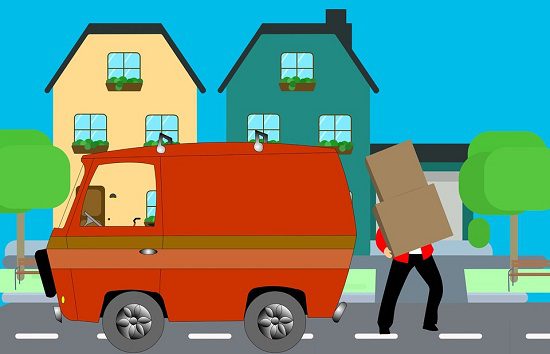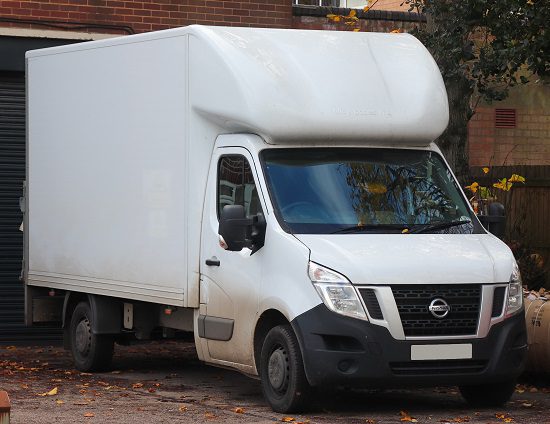In all industries, custom terminology, phrases, or jargon (if you like) arise, this is certainly true of the removals industry. Read our removals glossary of terms guide to learn inside removals terminology. We expect this article will be highly clarifying and educational about various aspects of moving terminology.
Keywords and phrases are provided in A-Z alphabetical order below.
Acceptance form
A form signed and returned by the mover acknowledging that they “accept” the removal companies’ “terms of service.” This follows a written quote that provides a price and specifics of the removals being completed.
Access
Gaining “access” is all-important when planning for removals. A route needs to be planned as to how the items being moved travel from the van to the required location within a property. Access could be restricted due to:
- Route obstructions – gaining access may also have restrictions “en route” such as low bridges, low hanging trees, narrow routes, etc.,
- Upper floors – if access is on upper floors, e.g., in apartments, flats, etc., then a plan will be needed to move items upstairs (e.g., by lifts or by stairs)
Any access issues need to be understood as they are likely to have implications on the price quoted.
Appliance dolly
This is a type of wheeled trolley, used by removal companies to transport various items, including bulky or heavy items.
Blanket wrap
This is a protective covering particularly used for wrapping furniture. Covering several materials such as heavy blankets or cloth, “blanket wrap” protects furniture from bumps, knocks, and scrapes when loading and whilst in transit.
Boxing
Associated with packing, the word “boxing” simply refers to safely placing valuables securely in a box ready for them to be moved.
Bulky items
These are typically large and awkward to carry items that need special care and attention during removals. They almost certainly will need to be separately detailed in a quotation (and may need separate insurance) and may include items such as gym equipment (e.g., treadmills, pianos, pool tables, etc.,)
Cancellation charges
This is a cost from the removal services provider for cancellation after a specified time. This is usually made to cover losses where the removal company cannot find alternative work.
Cartons
These are a form of packaging and consist of sturdy cardboard boxes, usually backed up with masking tape, which securely packages items ready for moving.
Crates
A form of packing which is especially sturdy. These consist of placing items inside an exceptionally sturdy wooden container ready for removal.
Declared (or insured) value
This is the amount you “declare” the items being moved are worth. Most often expressed as purchase cost minus depreciation, this must be accurate for insurance purposes.
Dedicated load
This is the most common scenario where the truck is dedicated (rather than shared) to one customer. Typically, with an A to B route schedule, all the belongings will be for just one window.
Delivery window
This is the window of time the removal company has “booked” or” allowed” for the removal work. The length of time will vary on many factors.
Deposit
This is the amount of money (“the deposit) necessary to secure a future “confirmed” date for removals.
Dismantling
This is the disassembly of items of furniture (most often sofas or beds) into separate more easily moved parts.
Door to Curbside
This is a level of service where items will be taken from the current address to the new address but will be left at the Curbside and not moved into the property.
Door to door
This is a level of service where items will be taken from the current address to the new address and will be taken to the rooms and destinations required.
Elevator (or staircase) charge
This is an additional charge made for negotiating items up to elevators or staircases. Most often made for flat or apartment moves, in practice many removal companies include this in one overall price and do not itemise separately.
ETA
This stands for the estimated time of arrival and is the time the removal company will arrive on the day of the move.
ETD
This stands for the estimated time of departure and is the time the removal company expects to leave with the removal van/lorry fully packed and ready to depart for the new location.

Read our removals glossary of terms guide
Estimate
This is a price given by a removal company but is not “firm” and may change following a survey. For smaller jobs, the estimate may become final, where a survey is not considered necessary.
Exclusions
These relate to items or charges that are not included within the terms of your contract.
Final instalment
This is the amount of money necessary to pay the final instalment for removals. This varies from one removals company to another, with some settling for payment on the day of the removal and others needing payment in advance.
Floor protectors
This is material placed onto hard flooring and carpets to protect the surface from any damage during the move.
Furniture covers
These are protective covers (usually quilted), which furniture is packed into before being moved.
Goods in Transit Insurance
This is a policy where a client is covered for damage to their belongings during transit. In many cases, Goods in Transit insurance is included within the removal price quoted, although some removal companies charge extra for this.
Luton van
This is a specific brand of removal van but is often used as a general phrase to describe medium-sized removal vans with approximately 600 cubic feet of capacity.

Luton vans are commonly used in removal projects
Owner packed
This is the most frequently occurring situation where the customer or “owner” packs items ready for removal.
Packer
This is a member of the removal company who are employed to professionally undertake packing the owner’s belongings within their current address. This includes the supply of materials, packing, wrapping, and boxing. It depends upon what is agreed upon, but often the packer is also employed to unload, unpack, unwrap, and unbox at the destination address.

Packing boxes are an essential part of any removals project
Packing
This is the action of moving items into appropriate packaging for the move. This can be completed by the owner or a removal company packer.
Packing materials
These are materials used to enable the protected removal of belongings. Various materials in a range of sizes are used. These include blankets, boxes, bubble wrap, crates, protective covers, tape, etc.,
Part load
This is a removal job where only part of the load is dedicated to a customer. Sharing a removal van can help removal companies with scheduling and also reduces costs.
Reassembly
This is the task of reassembling furniture at the new property (e.g., sofas and beds) which was previously dismantled prior to the move.
Removals
A definition from the Cambridge English Dictionary for the word “removals” is:
the process of moving furniture, equipment, and other possessions from one office, home, etc. to another.

Read our home removals guide
Survey
This is virtually always completed onsite, but for smaller removals could also be completed by phone. A representative of the removal company assesses with the customer what needs to be moved. A crucial factor is the volume to be moved, which determines the size of the removal vehicle used and implicates the cost.
Within the survey, issues such as access restrictions (at both/all properties), heavy items, fragile items, valuable items, insurance cover needed, and the date & time of the removals will all be discussed. Emerging from the survey will be a fixed price quotation, for a fixed amount of work, with the removal company being able to charge more if the work varies during removals (e.g., unforeseen access problems and long waiting times).
Volume
This is the amount of physical space that all items being moved consume. This is either measured in cubic feet or metres. During the survey, the cumulative volume of all items will be assessed, this will be important in choosing the correct vehicle type for removal.
Waiting Time
This is a time period where the removal company is left “waiting.” This is most likely due to contract problems (e.g., lack of availability of keys). Most removal agreements will have some inbuilt “waiting time.” If this allowed is exceeded, additional time may become chargeable.
Waiver
This is the intended removal/relinquishing of a contractual term within an agreement.
Contact Expert Moves about removals glossary of terms and other enquiries
We hope you enjoyed the Expert Moves removals glossary of terms guide. Hopefully, this explains everyday used removals terminology and moving terminology.
If you are needing a removals service, why not call Expert Moves Ltd on 0333 090 7997 (landline) or 07405 648478 (mobile)? You can also view our latest social media posts at this link. For a FREE customised quotation, simply complete our instant quote removal form.
Image Credits: Mohamed Hassan, Wikimedia, Billi the Cat, and Mohamed Hassan


0 Comments